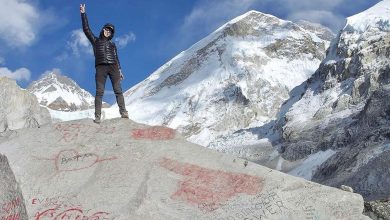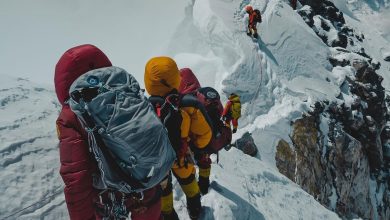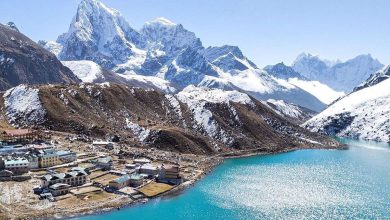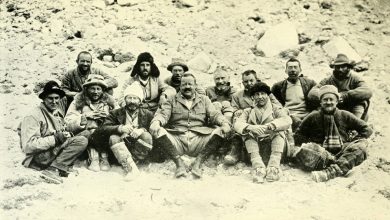Everest Base Camp Trek in October
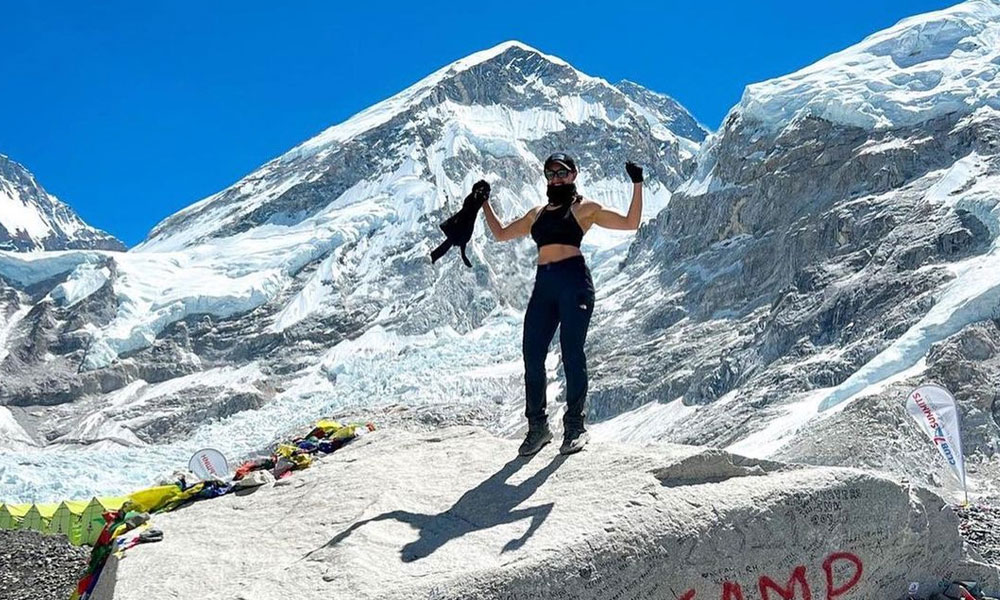
Everest Base Camp Trek takes you to the heart of the Khumbu region and on an exploration of the base region of the highest snowy peak in the world, Mt. Everest at an elevation of 8,849 meters (29,032 feet). The ideal periods for the Everest Base Camp Trek are considered to be spring (March to May) and autumn (September to October) seasons. However, even in the most ideal autumn season, October is considered just the right and the perfect month even, farther from the post-monsoon occasional rainfall during early- September and the light snowfall in the higher regions during late November as the winter closes in.
So, during your Everest Base Camp Trek in October, the stable weather and climatic conditions, clear views of the Himalayan vistas, mild temperature perfect for an outdoor adventure, and the festive atmosphere will make your adventure a marvelous and truly exhilarating experience.
Everest Base Camp Trek in October Highlights
- Mild temperature and stable weather conditions for the best trekking experience
- Stunning wide unobstructed views of the clear white-clad Himalayan vistas blending well with the clear blue sky
- Grand festivals; Dahsain one of the biggest festivals in Nepal including Tihar and Mani Rimdu
- Lush landscapes, soaring rivers, and waterfalls nourished by the monsoon rain
- Exploring the local culture, traditions, and lifestyle from the bustling cities to vibrant Himalayan towns during this festive season
- Mouthwatering traditional delicacies prepared specifically for the festive season
- Unhindered trekking experience farthest month from natural calamities
- Autumn is also the harvest season, so you will be able to enjoy a wider range of seasonal specialties

General Itinerary Outline of Everest Base Camp Trek
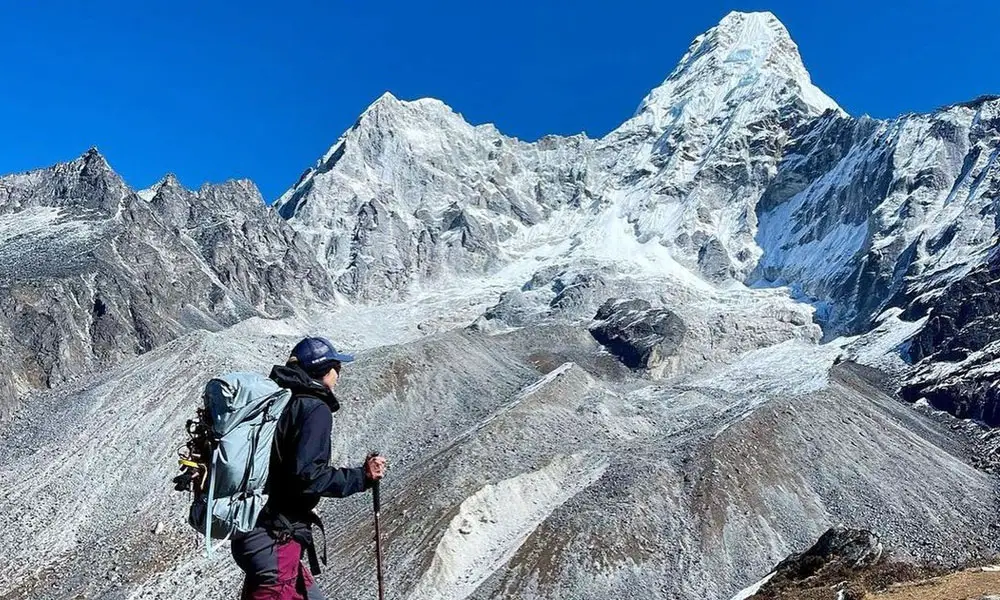
An average package of Everest Base Camp trek in October lasts about 13- 15 days or longer depending on the itinerary days and side exploration. For the most classical and general Everest Base Camp Trek, you can expect the following 13-day itinerary.
Everest Base Camp Trek- 13 Days
Day 1: Kathmandu (1,400 meters) to Lukla (2,850 meters) flight and trekking to Phakding (22,650 meters)
Day 2: Trekking from Phakding to Namche Bazaar (3,440 meters)
Day 3: Acclimatization and side exploration at Namche Bazaar
Day 4: Namche Bazaar to Tengboche (3,867 meters) trek
Day 5: Tengboche to Dingboche (4,360 meters)
Day 6: Second acclimatization day at Dingboche
Day 7: Trekking from Dingboche to Lobuche (4,930 meters)
Day 8: Trekking from Lobuce to Gorakshep (5,185 meters) to Everest Base Camp (5,364 meters) and return to Gorakshep
Day 9: Morning hike to Kalapathhar (5,545 meters) and trek down to Pheriche (4,250 meters) from Gorakshep
Day 10: Trek down to Tengboche from Pheriche
Day 11: Tengboche to back to Namche Bazaar
Day 12: Namche Bazaar to Lukla
Day 13: Flight back to Kathmandu from Lukla
Note: You can also choose from longer variants of the trekking packages to explore the Gokyo Valley, Three High Passes, and the Jiri route which will be longer than the standard 13- 15 days time frame.
Weather and Climatic Conditions of Everest Base Camp Trek in October
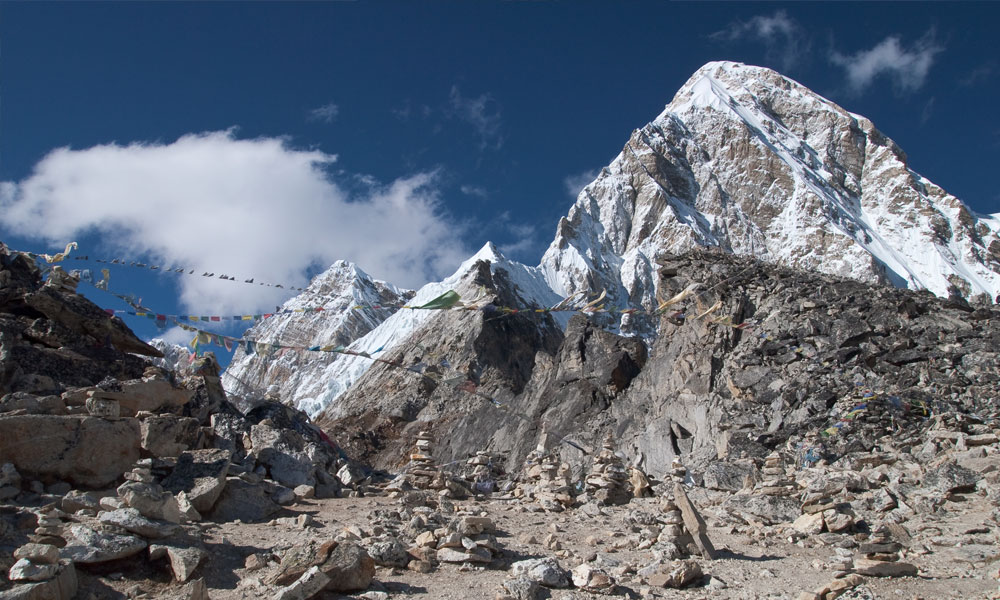
The October month in the autumn season in particular is known as the mid-season when every aspect and beauty of the season is at its peak. The weather is stable and warm, followed by sunny and pleasant days in the Everest region as well as overall parts of the country. Due to the clear weather and climatic conditions, the views also become absolutely magnificent, especially for this Himalayan expedition that passes through several landscapes
Most trekking enthusiasts and even mountaineers who are familiar with the weather conditions in Nepal prefer this month for their glorious Himalayan expedition. That’s the reason why you will see lots of experienced trekkers pick the Everest Base Camp Trek in October rather than any other season. The trekking experience in itself is very captivating during the month of October, as the daytime is accompanied by warm and sunny conditions meanwhile the morning and nights see rather cool and chilly temperatures.
The average temperature of the Everest region hovers at 12°C to 16°C, however at the higher altitude above the Dingboche the temperature can drop upto minus degrees. In general, you can expect the temperature to be around -5°C to -8°C at the altitude above Dingboche to Everest Base Camp. You are recommended to pack the right clothing and footwear suitable for the expedition for a warm and cozy experience and to prevent hypothermia and frostbite.
Overall, October is one of the ideal seasons for the best value trekking experience that allows you to truly relish and be immersed in this iconic Himalayan exploration. The mild temperature, fresh chilly mornings and nights, and just simply mesmerizing views of the surroundings in this clear month make the Everest Base Camp trek an exhilarating and memorable adventure.
Festivals in October
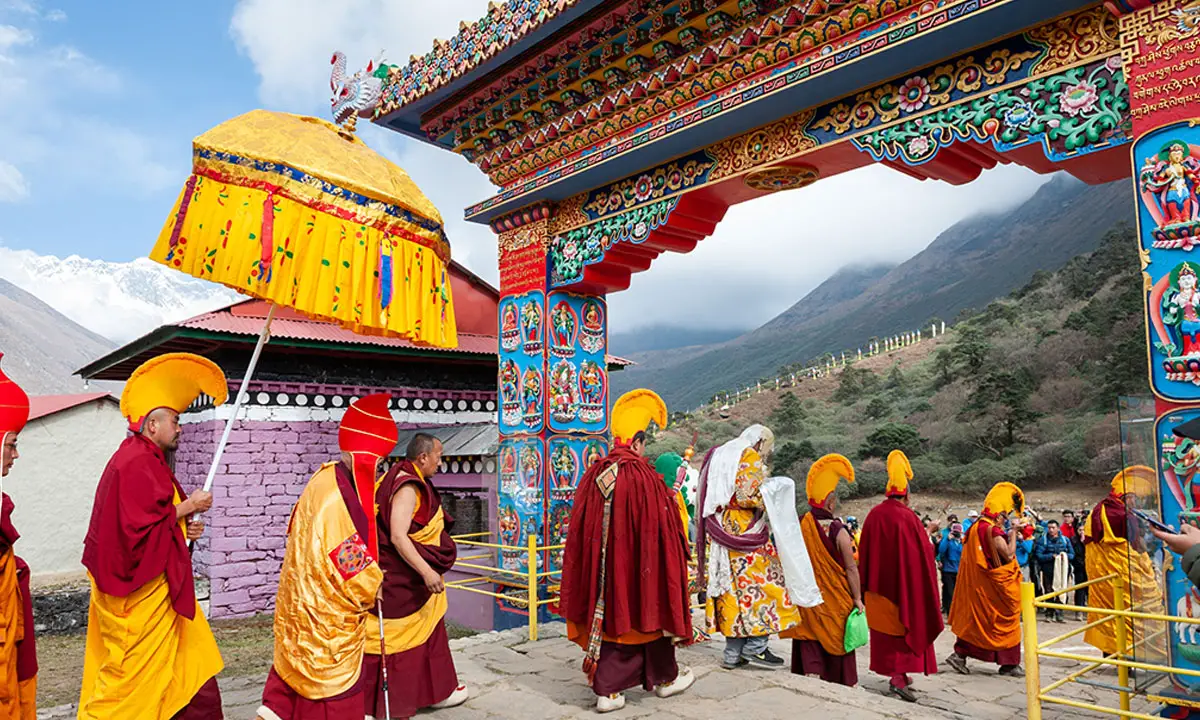
Another best thing about doing the Everest Base Camp Trek in October is the vibrant festival vibe that captivates the whole country with its color. You will be able to witness some of the grandest and most delightful festivals celebrated in the country during this month.
Dashain
During your trekking adventure in Nepal during the month of October, you will have the opportunity to explore the grandest cultural prospects of the country, one of the grandest festivals in the country, Dashain (Dashami) which lasts 15- days is celebrated in this month. This beautiful festival is celebrated to commemorate the victory of Goddess Durga who killed the demons Mahishasura after battling for entire 10 days.
From there on, this festival has been passed down the generations as a symbol of the victory of good over evil. Each day of this festival is dedicated to a special occasion, starting with the first day ‘Ghatasthapana’, and the final day ‘Kojagrat Puja’ marks the end of the festival.
Manor Rimdu
Similarly, Mani Rimdu is another delightful festival celebrated in the Himalayan region during the month of October. Mani Rimdu is celebrated for 19- days in the Himalayan region of the country to celebrate the founding of Buddhism by Guru Rinpoche Padmasambhava. The festival is celebrated with grand shows at monasteries like Tenboche, Chiwong, and Thame of the Himalayan region where Buddhist monks perform masked dances and Tantrik rituals.
Tihar ‘Deepawali’
As Nepal follows the Hindu calendar Vikram Samvat based on the twelve synodic lunar months, the festival doesn’t always fall during the same month. If you are lucky, you might also get the opportunity to witness another major festival in the country, Tihar (Deepwali), also known as the ‘Festival of Lights’ which is celebrated for 5 days. This festival honors both Yama, the god of death, and Goddess Laxmi, the goddess of wealth followed by the worshipping of different animals like crows, dogs, oxen, and cows.
The entire country is decorated with bright colorful lights during this festival, and the smells of the traditional-cultural delicacies fill the air with their sweet aroma, and the musical performance of ‘Desui-Vailo’ echoes throughout every corner of the country.
Food, Drinks and Accommodation
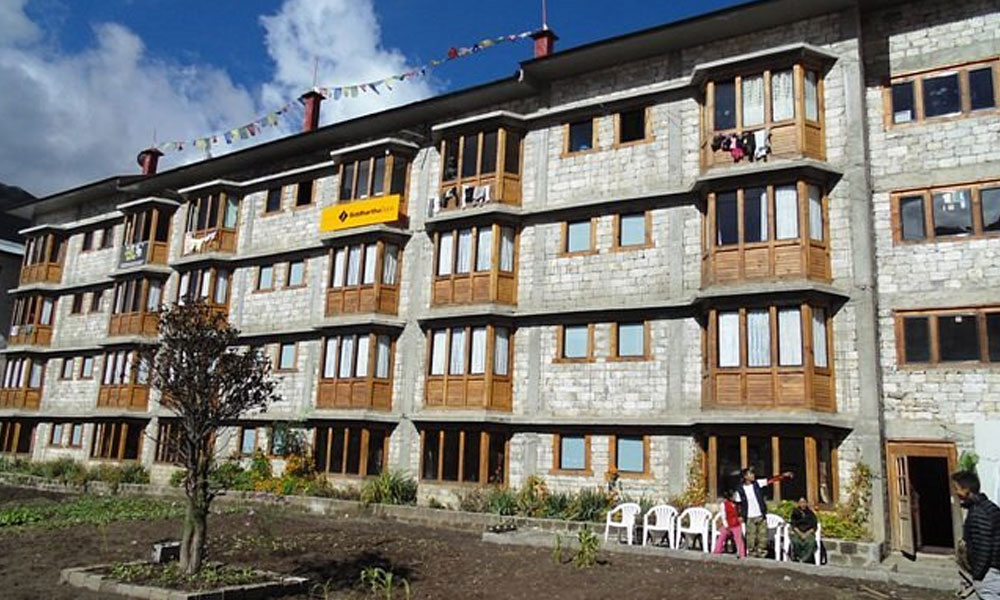
As the Everest Base Camp Trek, which leads you to the highest base camp in the world at an elevation of 5,364 meters (17,598 meters), is one of the major mainstream trekking routes in Nepal. You can expect to enjoy moderate to luxurious levels of food and accommodation services on this route. On top of that, in your Everest Base Camp Trek in October, which falls under the ‘harvest month’ you can expect a wide range of local specialties to entertain your palate.
Here are some general food items that you can expect during your Everest Base Camp Trek in October.
For Breakfast
- Coffee/tea, fruit juice
- Bread
- Corn flakes
- Oatmeal
- French toast
- Butter/jam
- Eggs
- Pancake
- Soup
- Porridge
- Sandwich
- Salad
- Chapathi
- Pappap
- Paratha
For Lunch and Dinner
- Daal, bhaat, tarkari
- Noodles
- Spaghetti
- Dumplings
- Soup
- Pasta
- Pizza
- Fries
- Macaroni
- Spring roll
- Steaks
- Thukpa
- Thenduk
- Shyakpa
- Sha Phaley
- Rikikur
- Tingmo
Note: Even if you are vegetarian or vegan, you will be able to enjoy the meals according to your preference during your Everest Base Camp Trek. As it is normal for eatery facilities in Nepal to prepare vegetarian meals as there are still a significant number of the population that embrace a vegetarian lifestyle, teahouse won’t feel burdened to prepare meals that suit your palate.
Drinks
As for drinks, you can enjoy several varieties both cold drinks and hot drinks during your Everest Base Camp Trek in October. For the soft drinks, you will be able to enjoy fresh fruit, canned and bottled drinks, as well as cold drinks. As for the hard drinks, you can buy from low-alcoholic beverages to brandy and whiskey. However, drinking alcoholic beverages during the high altitude trekking is not recommended as it affects bodily functions as well as complicates the acclimatization process.
For drinking water, although there is tap water available throughout the trekking route, it is not recommended to drink. And the bottled mineral water can cost upto US$ 4 at the higher elevation, thus the most economical and safe way to drink water during this trek is to use the boiled water at the teahouse along the trail. You can also use purifying tablets or solutions to stay on the safer side. As it is a high altitude adventure with long hours of walking you are recommended to drink at least 3-4 liters of water during every day of your trekking adventure.
Accommodation
During your Everest Base Camp Trek in October, you can expect a moderate to luxurious level of accommodation facilities and amenities depending upon your trekking packages. For the general trekking packages, you will stay in a shared room with 2-3 adjacent beds. You will be provided with a comfortable mattress, a pillow, and a blanket during your stay.
Autumn season is pretty close to winter, and while doing Everest Base Camp Trek in October, you will have to deal with the minus-degree temperatures at the higher elevations, so a four-seasonal sleeping bag and extra warm clothes are recommended for trekking this month. As for the bathroom and shower, you will be also using a shared vicinity, the lower regions are well equipped with the western style bathroom and you will be able to wash away the trekking exhaustion with a hot shower. However, these facilities are pretty much limited in the higher regions, and in most general packages you will be using a traditional-style bathroom and a hot bucket of water for a shower.
Difficulty Factors of Everest Base Camp Trek in October
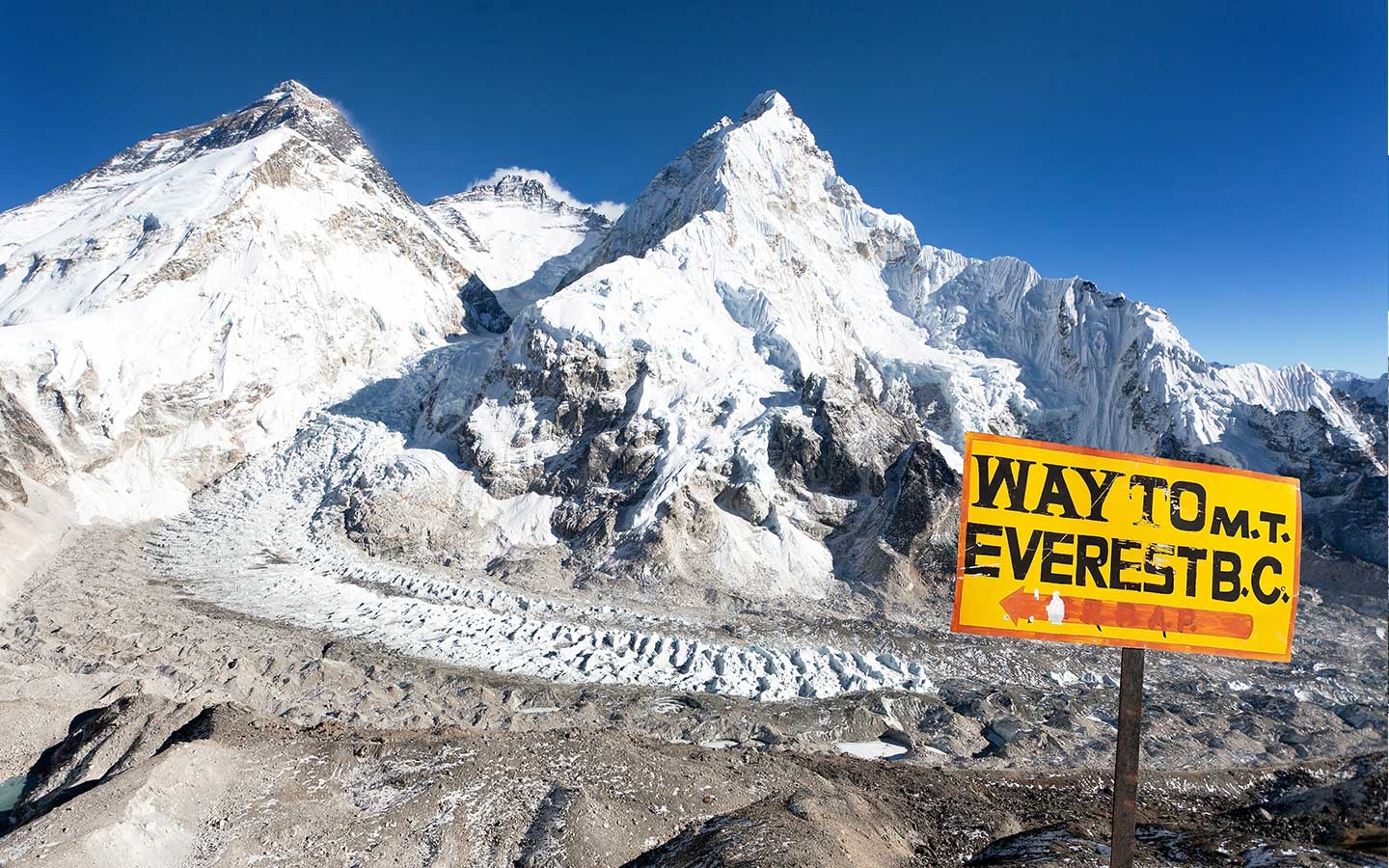
Everest Base Camp Trek, an iconic Himalayan expedition that takes you to the foothills of the highest snow-clad peak in the world, Mt. Everest at an elevation of 8,849 meters is not an easy exploration. The rugged off-beaten remote trails along with the rising elevation points can make this popular expedition quite a bit of a challenge. The Everest Base Camp trek has been overall labeled a ‘Moderately Difficult’ level which means that this epic trekking trek packs some challenging aspects.
Let’s check out some of the overall major factors of the Everest Base Camp Trek in October that make this adventure a moderately difficult adventure.
Elevation Gain
No doubt that the highest base camp adventure in the world takes you to astonishingly high elevation points. You will spend a significant amount of time above the 3,000- 4,000 meter altitude, it may not seem like a big deal, but the risk of altitude sickness is relatively high as you move further ahead above the altitude of 2,500 meters. If you don’t acclimatize properly, the risk of altitude sickness is pretty high during this expedition which at times can be even fatal.
Starting your Himalayan adventure in Lukla at an elevation of 2,800 meters, you will trek across the high-altitude points in this trekking adventure like Namche Bazaar (3,440 meters), Dingboche (4,360 meters), Lobuche (4,930 meters) and Gorakshep (5,185 meters) as you push for the Everest Base Camp at the altitude of 5,364 meters. However, the highest elevation point during this entire expedition is Kalapatthar at an altitude of 5,545 meters (18,192 feet). So, in overall, from the elevation jump point perspective, it is a difficult adventure with the potential risk of altitude sickness, you need to be on the lookout for its symptoms and follow the appropriate precautionary methods to stay on the safe side.
Trekking Distance
During your Everest Base Camp Trek, you will cover an approximate distance of 130 km (80 miles) in total with an average trekking distance of 6- 7 hours during each day of the expedition. You will be doing the major part of the trekking on the remote rugged and steep sections of the trail which can be pretty exhausting if you are not well prepared. On top of that, you will be trekking for long hours during your expedition carrying your luggage on the gradually rising altitude.
Thus, unless you have a good amount of strength and endurance level, this iconic trek might not be that enjoyable for you. Experienced high-altitude trekkers or people who exercise on a daily basis may not find this factor physically vexing but for beginners and trekkers who haven’t done enough preparation, every day’s trekking could take a massive toll on their body.
Acclimatization Day
If you are familiar with any high-altitude adventure, then you understand the significance of acclimatization days during your expedition. It is not possible for the human body to quickly adapt to the rising altitude, so acclimatization days are recommended per 1,000 meters of elevation gain. You can also directly link the number of acclimatization with the higher success rate, thus when doing this iconic Himalayan expedition, you are recommended to choose the package with longer itineraries and more acclimatization days.
Not only this will make your Everest Base Camp Trek in October more enjoyable but also significantly reduce the probability of altitude sickness. This way you will also be able to replenish the lost energy with adequate rest days along the trail.
Season of Visit
Although the weather and climatic conditions of high-altitude regions can be unpredictable at times, the off-season in particular notorious for the unfavourable weather conditions for the trekking adventure. So, if you by any chance pick an off-season then it will certainly elevate the difficulty factors of this epic trek. Winter (December to February) and monsoon (June to August) are the off-seasons with higher difficulty levels for this Himalayan adventure.
Monsoon is particularly known for the heavy rainfalls, really bad weather conditions, risk of landslides and falls, and the obstruction of transport modes. This is one of the most risky seasons for this high-altitude adventure as the steep segments are really dangerous when they are slippery. As for the winter, it is the coldest season in the region where the temperature is at freezing point. Even you will have to put in extra effort to trek on the normal trekking routes as they are covered with snow.
Furthermore, the winter freezing winds and occasional blizzards can make the adventure really challenging. The inhabitants of the higher altitudes also migrate to lower elevation points leaving the teahouses empty. So, even if you decide to do this trek with proper gear during the winter, you won’t be able to rely on the services and amenities of the teahouses at the higher altitudes.
Remoteness
Although the Everest Base Camp Trek is one of the major mainstream trekking adventures in Nepal, you cannot deny the fact that this is a remote exploration of the Khumbu region. Due to the lack of a proper transportation mode in the region, technological advancement and urbanization are pretty much limited. So, you will have to make do with the available services and amenities, even the luxurious mode of trekking adventure may not be on par with what you would expect in a developed region.
Moreover, the medical facilities along the trail are also not well developed and are pretty much limited along the trail. So, in case of any medical emergencies, you would have to rely on helicopter rescue.
Khumbu Cough
Khumbu cough is a really annoying condition that trekkers catch after closing in with the base camp region. Trekkers generally catch Khumbu cough after getting exposed to the dry air and extremely cold conditions of the Khumbu region. After catching the Khumbu cough, it will take several weeks and even months to shake off this annoying coughing condition.
This generally happens to the trekkers who haven’t packed the appropriate warm clothes for the higher region, haven’t been eating a balanced diet during the expedition, and overall to those who didn’t acclimatize properly to the rising altitude.
Is This Trek for Me?
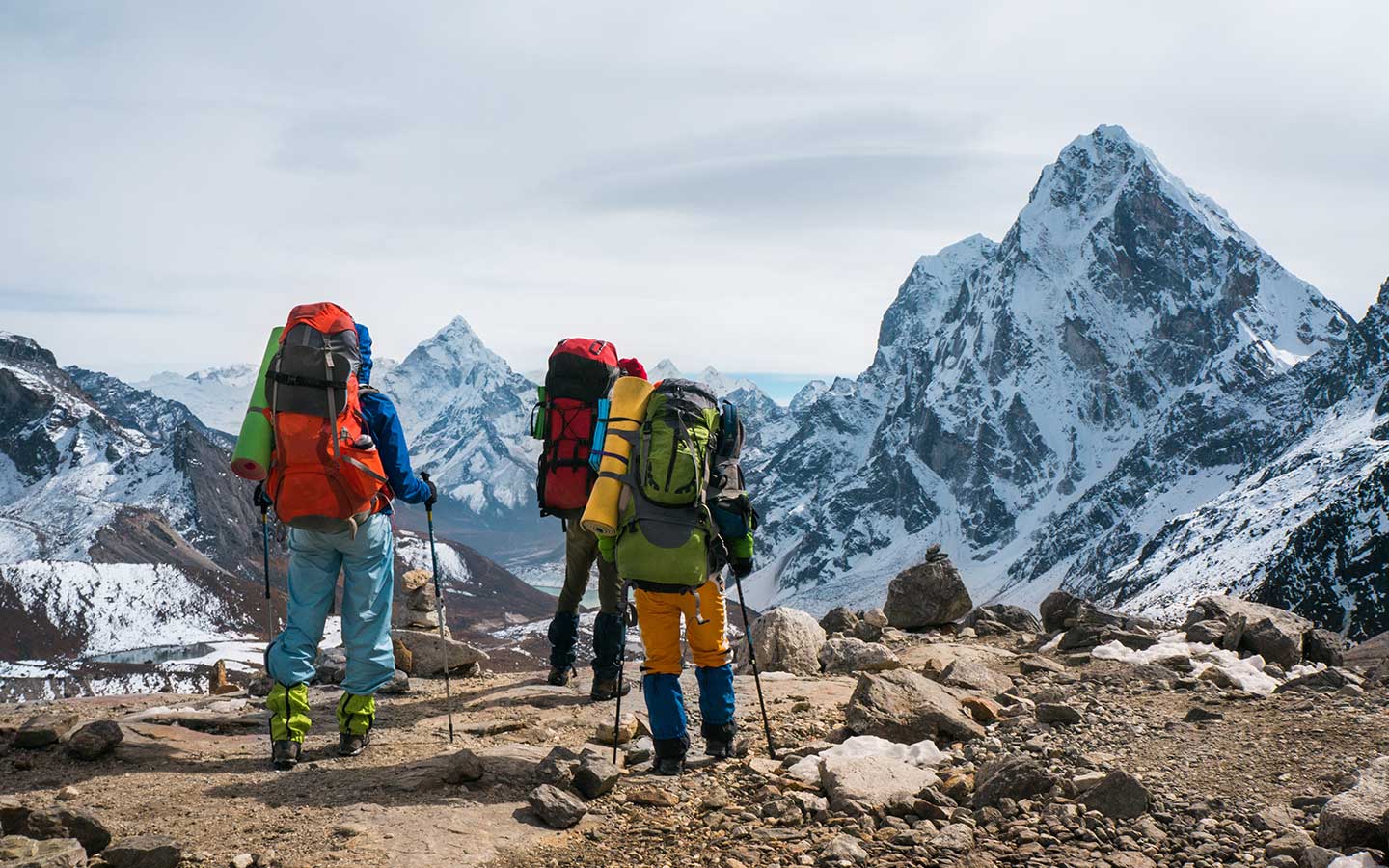
Considering the difficulty factor you might be wondering whether this iconic adventure to the highest base camp in the world might be the right deal for you or not. Well rest assured, to do this moderately difficult expedition, you don’t need any kind of prior high-altitude trekking experience, even complete beginners can easily complete this trek with enough preparation. However, a basic level of fitness is still recommended for a more comfortable and enjoyable experience.
You also need to be in good health condition for this high-altitude adventure. In case, if you have medical conditions, you can consult your physician and guide whether this trek is suitable for you or not. As for the age factors, in this iconic Himalayan adventure with a success rate of 95% to 97%, even children below the age of 10 and elderly trekkers as old as 70+ old have successfully completed this trek. At the end of the day, it all comes down to your determination, and how much you are willing to do this trek.
Everest Base Camp Trek in October is especially an overall easy expedition that significantly reduces the weather and acclimatization difficulty factors offering a pleasant experience, so if you really want to do this epic Himalayan quest October might be the best time to do it.
You may also like:
